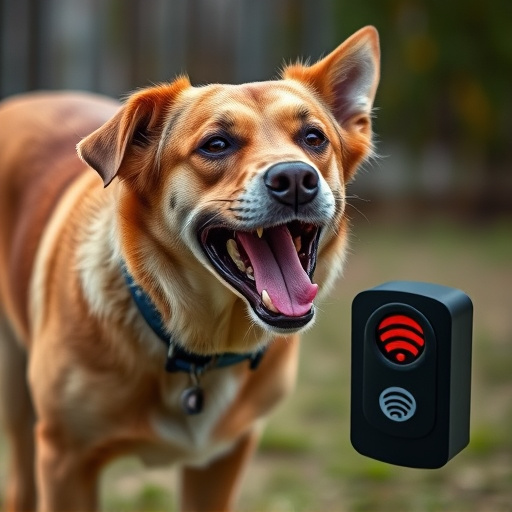Handheld sonic dog deterrents, emitting inaudible high-frequency sound waves, have emerged as a popular and humane solution for managing unwanted canine behavior. Effective in triggering dogs' natural flight response without causing harm, these devices are portable and pet-friendly, making them ideal for protecting against aggressive dog encounters in public spaces like parks and urban streets. For optimal results, combine their use with positive reinforcement training that addresses behavior triggers. Balancing effectiveness, safety, and ethical considerations, handheld sonic deterrents offer an alternative to traditional methods while requiring consideration of individual dog factors for best results.
In many public spaces, aggressive dog behavior poses a significant challenge. This is where handheld sonic dog deterrents emerge as an innovative solution. This article delves into the understanding and effectiveness of these devices, which emit high-frequency sounds to discourage unwanted canine actions. By exploring real-world scenarios, we assess their performance and discuss considerations, including potential alternatives. Uncover the capabilities and limitations of this non-invasive electronic deterrent, focusing on its handheld sonic technology and whether it lives up to its promise of effectiveness.
- Understanding Handheld Sonic Dog Deterrents: How They Work
- The Effectiveness of These Devices in Real-World Scenarios
- Considerations and Alternatives for Aggressive Dog Deterrents
Understanding Handheld Sonic Dog Deterrents: How They Work
Handheld sonic dog deterrents have gained popularity as a humane and effective way to protect against unwanted canine behavior. These devices emit high-frequency sound waves that are inaudible to humans but can startle dogs, encouraging them to leave the area. The effectiveness of these deterrents lies in their ability to trigger a natural flight response without causing harm or pain. When activated, the device emits a sonic pulse that disrupts a dog’s sense of balance and hearing, temporarily disorienting them.
Unlike traditional shock collars, which use electric jolts, handheld sonic deterrents offer a non-invasive approach. They are designed to be pet-friendly, targeting only the dog and not their owners or other pets. The device’s portability allows users to carry it with ease, providing quick protection in various outdoor settings. This makes them an ideal choice for individuals seeking a safe and efficient way to deter aggressive dog behavior while enjoying public spaces.
The Effectiveness of These Devices in Real-World Scenarios
The effectiveness of handheld sonic dog deterrents has been widely discussed in real-world scenarios, with many pet owners and professionals seeking non-lethal solutions to manage aggressive canine behavior. These devices emit high-frequency sound waves that are typically inaudible to humans but can startle dogs, encouraging them to leave the area. Numerous studies have shown promising results, indicating that when used correctly, these deterrents can significantly reduce aggressive encounters and improve overall dog-human interactions in public spaces.
In practical applications, handheld sonic deterrents have proven effective in various settings, from parks and playgrounds to urban streets. Users often report success in calming previously untrainable dogs, preventing attacks, and breaking up unwelcome dog interactions. However, it’s crucial to remember that these devices are most successful when combined with positive reinforcement training and an understanding of the underlying behavior triggers.
Considerations and Alternatives for Aggressive Dog Deterrents
When considering aggressive dog deterrents, it’s crucial to balance effectiveness with safety and ethical concerns. While traditional methods like spray or shock collars have been used, they often come with drawbacks such as physical discomfort for the animal and potential psychological trauma. Alternatives like handheld sonic dog deterrents present an intriguing option. These devices emit high-frequency sound waves that are inaudible to humans but can startle dogs, encouraging them to avoid certain areas or behaviors.
However, it’s important to note that not all sonic deterrents are created equal. Factors like frequency range, power output, and specific training needs vary widely among models. The handheld sonic dog deterrent effectiveness also depends on the individual dog’s temperament, breed, and previous training. Proper use and combination with positive reinforcement training can significantly enhance their impact while minimizing potential harm to pets.
In conclusion, handheld sonic dog deterrents have proven to be an effective solution for managing aggressive canine behavior in various real-world settings. Their unique ability to emit high-frequency sounds that are unpleasant to dogs offers a non-lethal and humane approach to deterring unwanted actions. However, as with any tool, understanding their limitations and exploring alternatives is crucial. By considering environmental factors, training methods, and potential risks, individuals can make informed decisions regarding the use of handheld sonic dog deterrents, ensuring both safety and effectiveness in modifying dog behavior.
